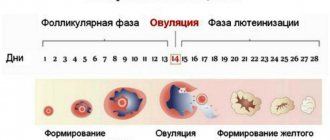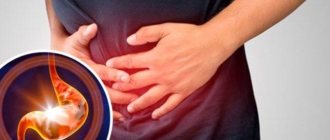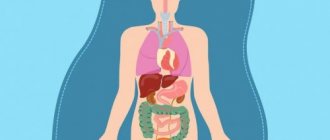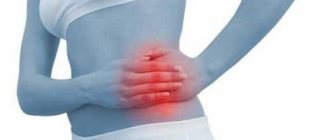Causes of pain in the left side
Pain in the left side is caused by injuries, acute and chronic pathologies of internal organs. Most often, the cause of pain is diseases of the pancreas, urinary tract and intestines. Women may experience pain and discomfort during ovulation and with some reproductive system diseases. Let's look at what pathologies and conditions most often cause pain in the left side.
Pyelonephritis
A nonspecific infectious-inflammatory process in the kidneys is accompanied by acute pain in the lower back and left side - between the lumbar spine and the 12th rib. Pain on the left side occurs when the left kidney is damaged. Acute inflammation is often accompanied by fever and chills.
Urolithiasis disease
The appearance of stones in the upper urinary tract can cause moderate pain in the lumbar region. Acute pain occurs with renal colic. In this condition, a stone becomes lodged in the ureter or kidney, which interferes with the flow of urine and blood supply to the kidney. The pain in renal colic is very strong, cramping, spreads to the thigh and genital area, and does not decrease at rest.
Urolithiasis disease
How to get rid of kidney stones today: 3 main methods
Diverticulosis
With diverticulosis, hollow “sacs” – diverticula – form on the intestinal mucosa. Periodically, they can become inflamed and bleed, causing pain in the lower abdomen, which gets worse with coughing and exercise.
Bowel cancer
Malignant tumors put pressure on nearby tissues and nerve endings, causing severe pain. Pain in the left lower or upper abdomen may be associated with sigmoid colon cancer. In this case, the patient also experiences other symptoms of pathology - blood in the stool, constipation, diarrhea.
Ovarian cyst
A left ovarian cyst often causes a dull aching pain in the left lower abdomen. The pain may radiate to the sacrum or rectum. Painful sensations intensify if a large amount of content accumulates inside the cyst. When a cyst ruptures, acute pain with dizziness, nausea and vomiting is observed.
Ectopic pregnancy
In an ectopic pregnancy, the fertilized egg attaches outside the uterine cavity. Most often this occurs in the fallopian (fallopian) tubes. The growth of the embryo causes stretching and rupture of the tube, which often ends in massive bleeding and can cause death. During an ectopic pregnancy, a woman experiences pain in the lower abdomen with radiation to the rectum. Disturbed pregnancy is accompanied by nausea, vomiting, decreased blood pressure, dizziness and fainting.
Pancreatitis
Pancreatitis is an inflammation of the pancreas with swelling of the damaged organ and nearby tissues, which provokes pain. Most often, the pain is localized in the epigastric region (in the center of the abdomen between the hypochondrium), but sometimes it also affects the left side or can be encircling. The pain radiates to the back, intensifies after eating and decreases if the person sits or leans forward.
Intestinal polyps
Polyps are benign formations on the intestinal mucosa. Pain in the left half of the abdomen can be caused by multiple and large polyps of the sigmoid colon. Unpleasant sensations worsen with sudden movements and bending forward.
To the point
What else besides pain in the left side indicates polyps in the intestines?
Spleen injury
Damage to the spleen is often observed with injuries to the abdominal organs, fractures of the ribs and spine. Injury to this organ is accompanied by pain in the left hypochondrium, which can radiate to the left shoulder blade or shoulder.
Myocardial infarction
With an atypical form of myocardial infarction, pain sometimes occurs in the left side. As a rule, it is accompanied by other symptoms: shortness of breath, changes in blood pressure, severe weakness, cold sticky sweat. This condition is life-threatening and requires urgent medical attention.
Diseases of the musculoskeletal system
Musculoskeletal diseases are classified as follows:
- general diseases of the system;
- congenital diseases;
- oncology;
- traumatic lesions.
- Descriptions of diseases of the musculoskeletal system
Everyone’s body is different and does not react the same way to certain problems, so the symptoms of such pathologies are quite diverse. Most often, diseases of the skeletal and muscular systems are manifested by the following symptoms:
- pain;
- stiffness in movements, especially after waking up;
- increased pain when weather conditions change;
- pain during physical activity;
- muscle pain;
- pallor of the skin of the fingers under the influence of cold, anxiety;
- decreased temperature sensitivity;
- swelling and redness around the affected area.
The course of the disease has a great influence on the symptoms. There are diseases of the skeletal system that proceed almost unnoticed and progress quite slowly, which means that the symptoms will be mild. And the acute onset of the disease will immediately make itself felt with obvious signs.
For pathologies of the musculoskeletal system, doctors recommend taking medications containing glucosamine and chondroitin, which have a good effect on cartilage tissue and promote its restoration. If the disease is infectious in nature, then antibacterial drugs and corticosteroids cannot be avoided.
| Disease | Image | Short description | Cause | Symptoms | Treatment |
| Scoliosis | Damage to the spine in the form of curvature to the side | The pathology develops during the child’s growth and is associated with injuries, congenital anomalies, and connective tissue diseases | Visual symptoms: the level of one shoulder is higher than the other; asymmetrical arrangement of the blades; pronounced curvature of the spine. In advanced cases, the disease leads to pressure on internal organs, as a result of which a man may experience pain in the lower abdomen | Orthopedists treat pathology. Depending on the degree of damage, the necessary therapy is prescribed. In general, these are therapeutic exercises, massage therapy, and corset therapy. In some cases, surgical intervention |
Treatment of pain in the left side
The treatment strategy for pain in the left side depends on the cause of the discomfort. Trauma and acute conditions, such as ruptured spleen, myocardial infarction, and ectopic pregnancy, may require surgery. In most cases, the patient is prescribed conservative therapy using medications and physiotherapy. In any case, diagnosis precedes treatment.
Diagnostics
Diagnostic measures begin with a visual examination, which is carried out by a therapist, gastroenterologist, surgeon, gynecologist or other specialist. During the examination, be sure to palpate the abdomen to assess the condition of the abdominal wall and abdominal organs. Based on the examination results, instrumental and laboratory tests are prescribed:
Ultrasound. Photo: pixabay.com
- Ultrasound of the abdominal cavity to study the size and condition of organs, identify abscesses and neoplasms;
- Ultrasound of the pelvic organs - prescribed to women to exclude or confirm gynecological diseases;
- radiography - to check the condition of the intestines and spleen;
- scintigraphy of the spleen to assess the condition and functional activity of the organ;
- laboratory tests: hemogram, clinical urine test, blood glucose test.
If necessary, additional diagnostic methods are used. In women with suspected ectopic pregnancy, urine is tested for the presence of human chorionic gonadotropin. Problems with the pancreas are identified using a coprogram. Sometimes patients are prescribed laparoscopic examinations and positron emission tomography.
Modern methods of treatment
First aid includes following a diet if pain in the left side is caused by dietary errors. You can use antispasmodic and antisecretory agents to relieve spasms and normalize the functioning of the pancreas and intestines.
For complex therapy use:
- non-steroidal anti-inflammatory drugs;
- antibacterial drugs;
- enzymes;
- probiotics;
- preparations of female sex hormones;
- antisecretory drugs;
- proteolysis inhibitors.
For neurological disorders, sedative herbal preparations and mild hypnotics are often prescribed. Many diseases respond well to physiotherapeutic treatment. The most commonly used are reflexology, UHF therapy, and magnetic therapy.
On a note
Who is at risk for a heart attack: talk to your doctor about the causes of a heart attack
Prevention of pain in the left side at home
The most effective measures to prevent pain in the left side at home are proper nutrition, regular exercise and a reasonable work and rest schedule. All other preventive measures are implemented in a medical institution. Doctors recommend annual medical examinations to monitor the condition of the gastrointestinal tract and urinary system. It is necessary to periodically do an ECG, ultrasound of the kidneys and abdominal cavity, and women should be observed by a gynecologist, have an ultrasound of the pelvic organs and colposcopy.
Tips for pain
For men, such sensations can be a consequence of urological diseases. It is difficult to give a definite answer to the question of what is located in the lower left abdomen in men. Unpleasant sensations can be caused by problems with the spine, abdominal muscles, or serious abnormalities in the genitourinary system.
Even knowing which organs are located in the lower part of the abdominal cavity on the left, you will not be able to give an accurate answer about the cause of the pain without undergoing an appropriate examination. Only your attending physician can describe an accurate picture of your condition after appropriate research. The main thing is not to treat your health negligently, dulling the pain with pills, but to contact qualified specialists.
Popular questions and answers
Pain in the left side is a common complaint when visiting a doctor. However, many men and women do not consider this symptom dangerous and do not turn to specialists. We asked experts when a person needs medical attention. We also found out how to relieve pain in the left side and whether it is worth doing.
When can pain in the left side be dangerous?
Danger is signaled by pain in combination with a high temperature - 38˚C and above. Urgent help is required if a sudden sharp pain is localized in one point and does not stop within several minutes. A terrible symptom is pain and discomfort, which are accompanied by vomiting and black stool streaked with blood. In this case, a perforated gastric ulcer may be suspected. Women should be wary if they experience stabbing pain in the left lower abdomen and observe signs of pregnancy. This may be a sign of an ectopic pregnancy.
When to see a doctor for pain in the left side?
Contact a specialist if pain occurs regularly, continues for a long time, or intensifies. Diagnosis and treatment can be carried out by different specialists: gastroenterologist, gynecologist, surgeon, urologist, oncologist. In most cases, the examination begins with a therapist.
How can I relieve pain in my left side?
Mild and moderate pain can be relieved with antispasmodics, if the person does not have an allergic reaction to these drugs.
The use of analgesics is not recommended as they alter the clinical picture and make diagnosis difficult. Sources:
- Acute pyelonephritis. Clinical recommendations. Russian Society of Urologists. 2022
- Chronic pyelonephritis in adults. Clinical recommendations. Russian Society of Urologists. 2022
- Clinical recommendations. Urolithiasis disease. Russian Society of Urologists. 2022
- Ectopic (ectopic pregnancy). Clinical recommendations. Russian Society of Obstetricians and Gynecologists. 2021
- Acute pancreatitis. Clinical recommendations. Ministry of Health of the Russian Federation 2020 https://disuria.ru/_ld/9/999_kr20K85mz.pdf
- Recommendations of the Russian Gastroenterological Association for the diagnosis and treatment of chronic pancreatitis. year 2014.
Atypical location of the inflamed appendix
With appendicitis, pain is most often determined on the right, but in rare cases the pain shifts to the left. Symptoms of the pathological condition are:
- initially moderate intestinal spasms, intensifying over time - the pain becomes cramping and throbbing;
- nausea ending in vomiting;
- diarrhea (relatively rare);
- increase in body temperature.
Soreness in the lower left abdomen in men may indicate the development of serious illnesses. And if pathological symptoms appear, it is recommended to obtain qualified medical advice.









